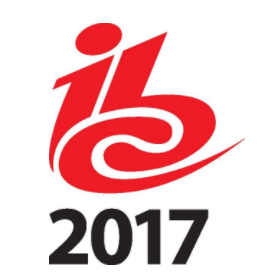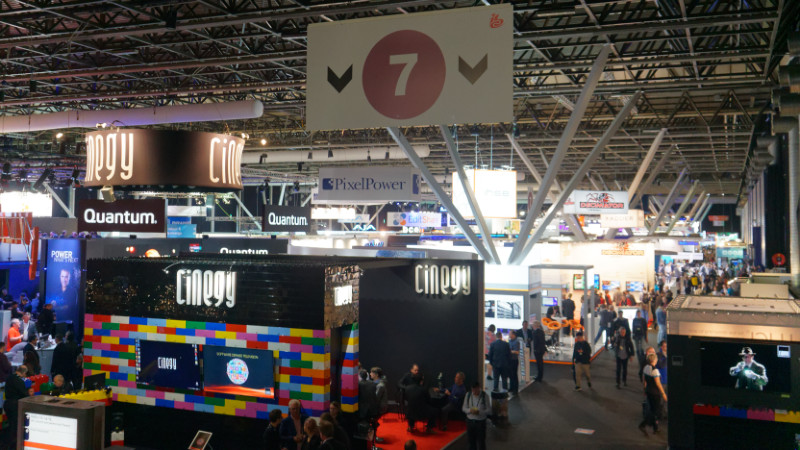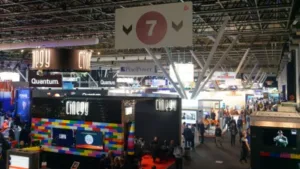 Quite a few of the interesting display developments at IBC were previewed at NAB, but many of the products were shown for the first time in Europe.
Quite a few of the interesting display developments at IBC were previewed at NAB, but many of the products were shown for the first time in Europe.
For us, a highlight was the Eizo monitor that is designed for content grading and uses one of the two different 1,000,000 UltraHD panels that have been developed. The one that Eizo is using (in a computer monitor) and Ikegami is using in a broadcast monitor (with SDI and broadcast monitoring features) uses a dual panel architecture that modulates the backlight at around 1,000:1 contrast, and the front panel adds 1,000:1 giving the combined level of contrast. Eizo showed it side by side with a Sony OLED and that’s the first time I have ever seen an LCD that, side by side, looked better than an OLED. The brightness is 1,000 cd/m² (The technology is not suitable for consumer TVs because of the low efficiency which would mean excessive power consumption).
The other panel, used by TVLogic and Flanders Scientific also has 1,000,000:1 contrast, but achieves it by having 2048 LEDs that are directly addressable and has double the brightness at 2,000 cd/m². The system has some halo effects, we heard, but nobody with one of those panels was showing the kind of tiny point starfield that OLED makers like to show.
In HDR, HLG is now well established and support is getting very wide alongside PQ. We heard little or nothing about HDR10+, except that it is being seen as being able to use the dynamic metadata in Dolby Vision streams. UltraHD resolution is pervasive, but there continues to be a lot of interest in HFR/HDR 1080P which gives good results and may be a more practical for those sending content using DVB-T2. Dolby was demonstrating an interesting solution to add metadata automatically to broadcast streams at the encoder to overcome the objection that broadcasters have about metadata. (Dolby Has A Way of Creating Dynamic Metadata)
As I wrote recently, 8K enabling technology such as encoders was reasonably widely shown. New codecs help reduce the level of data in production (although there is still a lot of data). However, most would like to see the high image quality of OLED and it’s going to be a couple of years (at least) until such displays become available, and a lot longer before they become accessible in price. Sony was showing a new 8K camera. Several people highlighted to us that 8K content will be needed for VR applications.
Although several LED display makers were at the show, there was not much new technically, although company changes are interesting. (IBC 2017 LED Display Roundup)
Although OTT has been seen as a threat to other broadcast methods, especially satellite, at IBC I kept hearing of serious quality issues when providers have tried to promote big OTT multicasts and it seems that satellite and other broadcast will be needed for some time for live content. I have thought that hybrid was the optimum solution and I remain convinced of that. One of the interesting technologies that I saw was a new development by Eutelsat/Neotion that supports IP over DVB which allows 50 Mbps of content to be streamed from a single transducer to a low cost STB. That could allow a lot of simultaneous channels.(Neotion Brings IP to Satellite)
Sony abandoned its IBC data centre this time and ran everything in the cloud – a powerful statement about the future.
A couple of years ago, all the STB suppliers were talking about the opportunity for IoT. This remains an interesting opportunity, but the complication of support is a significant drag on the speed of development.
 Image:Meko
Image:Meko

